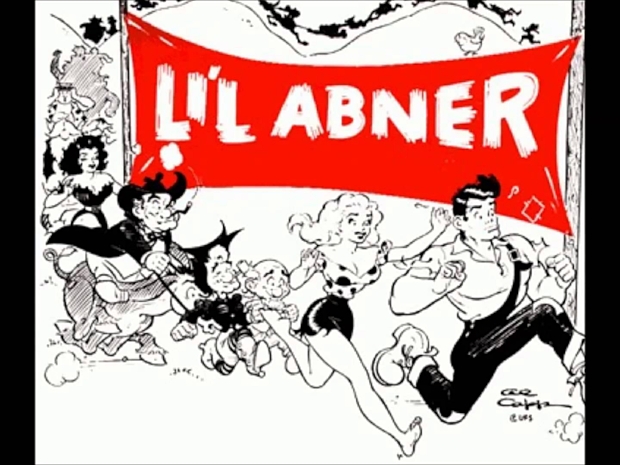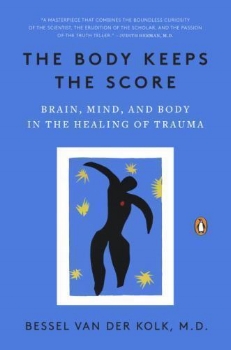Another Conversation on Masculinity, Society, and Change. by Calvin Harris H.W., M.
“Rationalization was much easier than recognizing the gravity of what was lost: an innocent, healthy childhood and an introduction to sexuality on my terms” - Concepción de León
This is a powerful quote from New York Times writer, Concepción de León.
I have spoken before about the necessity of sexuality, and gender preference be defined by the individual, coming from their innate self, expressed outwardly decided by the person in their own terms.
I have mention before how this innate process has been derailed through children’s storybooks, affecting children’s gender and sexual behaviors from centuries past. So, today I would like us to look at a tenacious twentieth century American comic strip, that has speed seemed to act as an equalizer of bad behaviors (if for only one day), a chance for the young female adults of the last era to enact behaviors befitting their male counterparts. and how this American folktale may have the underpinning for new sexual roles and yet again poor marks regarding Males and Masculinity in the twenty first century and beyond.
The Sadie Hawkins Day Race
The Comic Strip was created by cartoonist Al Capp and called Li'l Abner. The Encyclopaedia Britannica reported that Li’l Abner, ran in American newspaper from 1934 until 1977, chronicling the absurdities of daily life in the fictional Appalachian town of Dogpatch.
The comic strip abounded in stereotypes of Appalachia. Its title character, Abner Yokum, was a handsome, muscle-bound hillbilly, as lazy as he was dull witted. Like Abner, most of the men of Dogpatch were cast as essentially useless to society; all the real work was done by the “wimmenfolk.” One such woman was the curvaceous and beautiful yet hard-working Daisy Mae Scragg, who was hopelessly in love with Abner and pursued him fruitlessly for years before they finally married in 1952; they produced a child, Honest Abe, in 1953. Another was Abner’s mother, Mammy [who to me looked like Popeye the Sailor], She was the unofficial mayor of Dogpatch, who smoked a corncob pipe and kept the Yokum household running while her lazy, illiterate husband, Pappy, did little more than lie about.
Capp used Li’l Abner to comment satirically on American life and politics, spoofing ruthless capitalists in the early years before turning his wit on hippies and antiwar activists as his views grew more conservative later in life. He retired his creation in 1977, two years before his death. Since then, Li’l Abner has been reprinted at various times.”
In its wake, this comic strip has had a profound influence on the way the world viewed the American South, Men’s & Women’s roles. and a notable celebration in Dogpatch called, Sadie Hawkins Day, on which the women of the town were allowed to marry any bachelor they could chase down and capture; annual on that day of role reversal. Females asked males to dances, have sex, or marry. The enormous popularity of the Sadie Hawkins Day had Capp obligingly making it a comic strip tradition every November, lasting four decades. The Sadie Hawkins Day phenomena went from being a pseudo-holiday November 15, 1937 to gaining in popularity in 1939, two years after its inauguration, the celebration warranted a two-page spread in Life Magazine, who reported that on “Sadie Hawkins Day, Girls Chase Boys in 201 Colleges." By the early 1940s the comic strip event had swept the nation's imagination and acquired a life of its own. By 1952, the event was reportedly celebrated in various venues around the world. It became a woman-empowering rite at high schools and college campuses, long before the modern feminist movement gained prominence.
The practical side of Sadie Hawkins day was simply one of gender role-reversal. Women and girls take the initiative, make decisions in preparation to go out with their invite man or boy of choice — almost unheard of before 1937.
Yet the Male paradigm, the persona of the male counterpoint in Dogpatch depicts a protagonist, “who is handsome, muscle-bound and as lazy as he was dull witted. A character essentially useless to himself, to his family and to society.
A character, that we can only hope will not take hold in the American male psyche, as the roles of men and women begin to balance each other out, no longer men vs women but equal in opportunity.
Book Unspeakable by Daum
Meghan Daum, author of “The Unspeakable: And Other Subjects of Discussion”, an occasional, Los Angeles Times oped columnist. www.meghandaum.com
On a topic of women vs men causes and movements, Meghan said [these movements] “will live or die by the degree to which it’s willing to let people in. Until it makes room for examinations not just of toxic masculinity but also toxic femininity—and, even better, dispatch with these meaningless terms—it will continue to tell only half the story. Until it admits that women can be as manipulative and creepy and generally awful as men, the movement will continue to send a message that we’re not really whole people.”
I’m wary of any language that defines people ‘only’ based on what was done to them, as opposed to an identity they chose. I would not want people’s life story to be overshadowed by notions of popular culture.
Yet so many men have felt isolated and unresponsive by what was misread as to how they should act and be by their culture. Decisions in life and sexually counter to their nature, that they just freeze up, or succumb to that which can only be described as trauma.
Dr. van der Kolk a psychiatrist specializing in post-traumatic stress disorder, working with veterans to sexual assault survivors, wrote a book called: “The Body Keeps the Score” which hinges on his idea that trauma is stored in the body and that, for therapy to be effective, it needs to take into account the physiological changes that occur. He says, “Many people also experience dissociation, which can manifest as literal desensitization in parts of the body or the inability to describe physical sensations.”
Men’s identities must change to be able to let go of painful isolation. Let go of fragmented storylines, images, sounds and emotion that must be processed as belonging to the past.
The Re-Imaging of Masculinity in the 21st Century and it’s role model for the coming youth, must be vigorously overhauled and fiercely optimistic of a person’s place in the world, for example:
Masculine youth needs to learn to be rigorously honest about what he knows and what he needs to know, and what he feels. To express constructive emotions that exposes the past and lets it go. He knows how to rage without hurting others. He knows how to fear and keep moving. He knows joy, and shares gratitude. He seeks self-mastery.
The 21st Century and beyond male youth has to learn to let go of childish shame. Feeling guilty when they have done nothing wrong. He is kind to men, kind to women, kind to children. He teaches others how to be kind.
He stopped blaming women or his parents or men for his pain. He creates intimacy and trust with his actions. He stopped letting his defenses ruin his relationships. He stopped letting his libido run his life. He has learned self-respect comes from telling the truth. He has men who he trusts and turns to for support.
He confronts his limitations. He knows how to take conscious chances makes things happen. He knows how to learn from his mistakes and roll with it. When he falls, he gets back up. He practices compassion, for himself and others. He is disciplined when he needs to be. He is flexible when he needs to be. He has high expectations for himself and those he connects with and finally He knows how to listen from the core of his being.
S. F. Pride 1986 Snake Man
He knows he is an animal and part of nature. Yet he knows his spirit and the connection to something greater. As a whole person, he looks for ways to serve others. He knows he has a higher purpose. He loves with fierceness. He laughs with abandonment because he lives fully.
These are some descriptions of the Re-Imagined Masculinity, a reality that means a revolution/evolution of the holders of the future, that means a change in you, A call for a rethink of the stories you tell about yourself, a rethink of expectations of yourself and others, and a focus on tomorrow.
If these words speak to your heart, learn more
mentoring and training that offers powerful opportunities for men’s personal growth at any stage of life.
Calvin has been facilitating men’s work for over a decade.
A credo for the new masculine. a New Conversation with Men,
Reclaiming Male Role Models,




